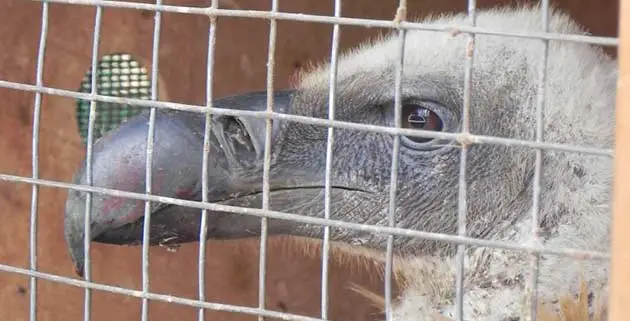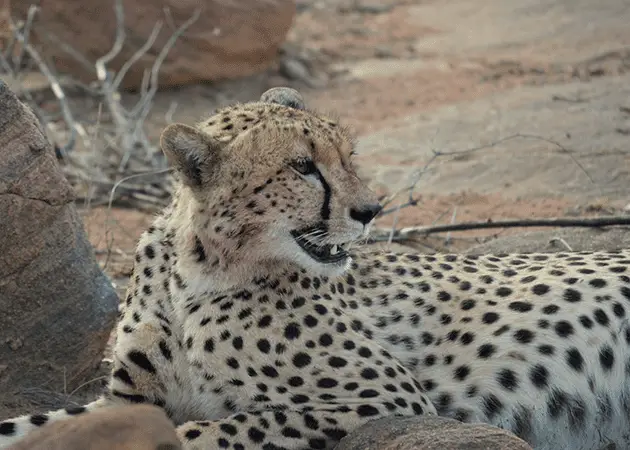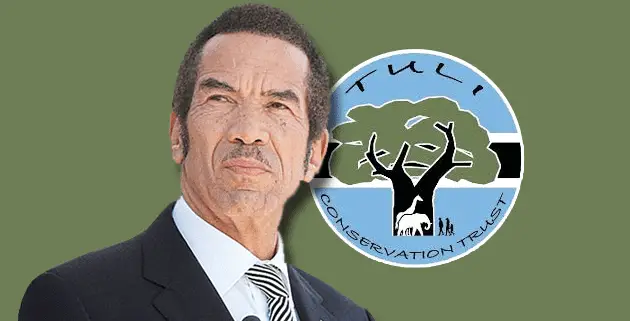Anti-Poaching: To Rescue or to Shoot Injured Wildlife?
While on a game drive through a reserve in Northern KwaZulu-Natal, our tour group spotted two animals that had fallen victim to poaching snares. Both were still alive and lumbering through the bush in obvious pain and agony. What would the standard procedure be – to sedate the animal, remove the snare and treat its wounds or to shoot and put the animal out of its misery?
By Des Langkilde.
Understandably, such a decision would be based on the severity of the animal’s wounds but surely any effort that would increase its chance of survival would be worth the effort?
However, such decisions are rarely as simple as they seem. Given the following scenario, how would you have handled the situation?

The first animal, a male Impala, had a strangle-noose wire wrapped around its neck with the lead wide entangled around its rear legs. As the Impala moves, the noose tightens and ensures a slow, agonising death by strangulation. No bleeding around the neck was evident and the Impala continued to graze, which seemed to indicate that he had not been snared too long ago.
The second animal, a Blue Wildebeest, had its front left elbow joint almost severed from a wire snare and, judging by the lack of bleeding around the area, must have endured the pain for several hours, if not days.

The time of the Impala sighting at around 3:30 pm left enough daylight for a rescue operation to be undertaken, while the Wildebeest was spotted less than 500m away from the Impala sighting at around 5pm.
Here’s what actually happened: the very competent (but clearly powerless) safari guide radioed the lodge manager, who arrived at the first sighting with an assistant lodge manager some 10 minutes later. After casually observing the distressed Impala, lodge manager one stated that it would need to be put-down as it was “pumping blood” which was clearly not the case.
After asking if they could not sedate the Impala and at least attempt a rescue, the assistant lodge manager got decidedly authoritative, stating “We don’t allow tourists or media to witness this type of situation!” And off we were sent to continue the game drive – only to encounter the poor Wildebeest, which said competent guide again reported-in.
Now the last thing that any lodge manager should tell a journalist is to “mind your own business” – this kind of treatment begs the question of transparency in conservation. Both lodge managers were conspicuous by their absence at the lodge during the evening dinner. It was left to the house-keeping manager (who had accompanied us on the game drive) to inform us that; “all has been taken care of – so don’t worry about it, OK.”
Well, I do worry about it. Especially when no gun shots were heard that night, nor was any feedback forthcoming the following day. One has to ask the following questions:
- Were these two animals left to suffer all night and either be taken down by the resident hyenas or butchered and carted off by the poacher?
- What anti-poaching and snare removal efforts are made by the game reserve staff?
- Was the lack of action due to apathy or to a lack of funds to procure the necessary animal rescue resources and tools?
From a transparency point of view, witnessing the shooting of an injured animal would clearly upset some guests, so lodge manager two’s reaction is understandable in this regard. However, witnessing the rescue and release of an entangled but moderately uninjured animal is an entirely different matter.
Many game reserves that I have visited encourage their guests to participate in wire snare locating and removal while on a guided walking safari. Being actively involved in rescuing an ensnared animal would send most visitors into rapture and as tourists are prone to do, they would share their experience, images and video clips on social media pages and sing the praises of the reserve, lodge and country.
So, if allowing guests to witness an animal rescue is good for public relations, maybe the quoted reaction is about economics.
I did some quick research over the internet, which revealed that the cost of a tranquilizer dart is roughly $42 USD (581 ZAR) – $28 for the tranquilizer (100ml of Xylazine) and $14 for the dart – and about $33 USD (457 ZAR) for 500 rounds of .22 high velocity rifle bullets. By contrast, the cost of a common Impala at a game auction is around $92 USD (1,283 ZAR. Source: 2013 Average Game Auction Prices).
So which was it? Did the reserve not have any tranquilizer darts and the necessary blow-gun with which to administer it? Were bullets or perhaps rifles in short supply? Or do Impala breed so rapidly that they are expendable?
The conservation officer at this particular game reserve was given an opportunity to comment on this article, and here is his reply:
“As you may know, conservation is by no means sunshine and roses, and quite often difficult decisions regarding the fate of certain animals has to be made, no matter how hard it is emotionally. To clarify as to what happened to the impala, we did in the end decide to take it out. The decisions was not an easy one, but we had to weigh up both financial and conservation reasons. To motivate, financially it would be too expensive, as yes, a dart may only cost R250, however, new laws prohibit just any person having these drugs on their property unless they are a registered vet. Even for game capture teams these days, they have to have a vet present for darting purposes due to how dangerous these drugs are to humans and also the current poaching situation within SA. Given this fact, we have to add the cost of a vet to travel to the reserve, the cost per hour to locate the impala, which in this instance took over four hours to locate. A bill like this would easily have amounted to over R2500 and an animal worth R650.
Added to this, quite often there are other unseen internal injuries that have been caused by the snare such as blood circulation issues, and added to the stress of being darted, could also dramatically reduce the chances of survival making it a 50/50 option. An impala is by far the most successful breeder of the antelope on the property, therefore, you can understand that it was in the best interest all round to take it out of its suffering.
As for the wildebeest, the tendons inside the joint were severed and the was little hope of recovery as there is no way to keep a wild animal like this immobilised for the amount of time it would take for the leg to recover.
The reason why you would not have heard the shots is because we use a .22 calibre rifle with a silencer on, as to not cause any further stress to the injured and surrounding animals, as is clearly visible by how calm the animals are around the lodge.
We understand that you as a guest, especially being a journalist, would really have liked to be part of an operation of this kind, but it is at the end of the day not something that we want our guests to see, or to be part of, for many reasons that we have learned over the past thirteen years of being in this industry.
Very rarely does an incident like this take a positive turn. We understand your justification on how this can have positive repercussions/snowball effect if a guest gets to experience a search and rescue kind of operation, but perception is in the eye of the beholder, and not every guest understands when tough decisions are made.”
What’s your opinion on this subject?
Email editor@tourismtattler.com or comment by sharing this article via one of the social media channels below.





